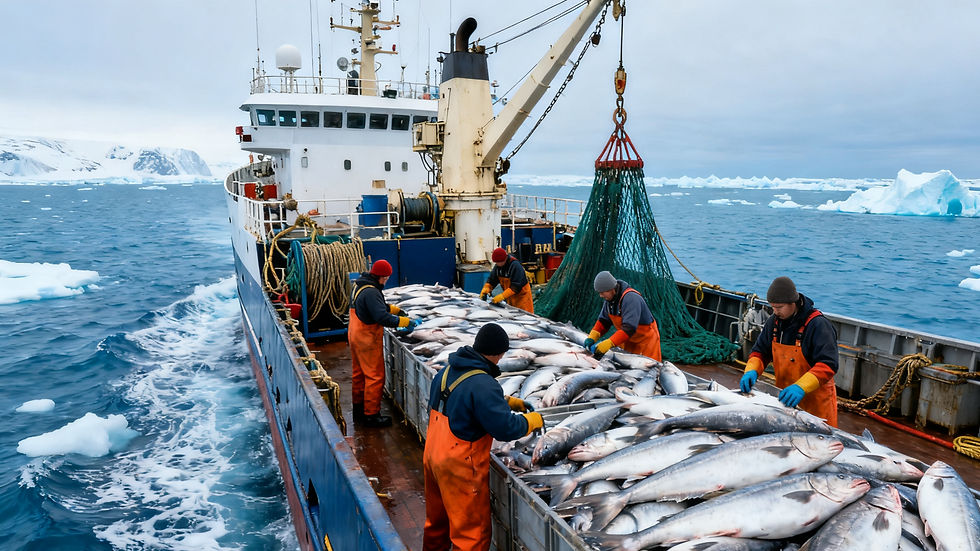Jan-Jul 2025:Korea Frozen Pollock Imports Drop 4%, Russia Remains Key Supplier
- Easy Seafood

- Aug 27
- 2 min read

I. Core Import Data: Declines in Volume and Value, Significant Rise in Unit Price
In terms of key indicators, South Korea's frozen pollock imports in the first seven months of this year were characterized by "synchronized contraction in volume and value, and a counter-trend increase in prices":
Import Volume: A total of 66,517 tons were imported, a decrease of 10,075 tons compared with 76,592 tons in the same period of 2024, representing a 4% year-on-year decline;
Import Value: It also fell to USD 71.4 million, a 4% decrease from the same period last year;
Average Unit Price: Reached USD 1.07 per kilogram, an 10.8% increase compared with the same period in 2024 (calculated to be USD 0.96 per kilogram). This indicates that although the total import volume decreased, the market value of frozen pollock was still supported to a certain extent by the price increase.
II. Supply Pattern: Russia Dominates, US and China Supplement with Higher Prices
In terms of supply sources, there were significant differences in market share and prices among countries, forming a pattern of "one dominant player and two supplementary players":
Russia: Absolute Core Supplier
It ranked first as South Korea's frozen pollock import source with a 96.5% market share, almost monopolizing this product category market. Moreover, its price had strong competitiveness, with an average of USD 1.05 per kilogram, slightly lower than South Korea's overall average import price.
US and China: Small-Scale Supplementary Suppliers with Higher Prices
The two countries accounted for a very small proportion of South Korea's frozen pollock imports, but their prices were significantly higher than that of Russia:
The US supply price was USD 1.62 per kilogram, 54.3% higher than Russia's;
China's supply price was USD 1.73 per kilogram, 64.8% higher than Russia's.
The higher prices may stem from differences in product quality and fishing costs. Although they have not formed a scale advantage, they provide diversified options for the South Korean market.
III. Industry Impact and Future Outlook
Current Impact: As an important global aquatic product consumer market, the decline in South Korea's frozen pollock imports may be related to adjustments in domestic demand, increased supply of alternative aquatic products, and fluctuations in global pollock catch. Russia's high market share not only reflects the close cooperation between the two countries in aquatic product trade but also highlights its international advantages in pollock resource reserves, processing capabilities, and logistics costs.
Future Trends: With the advancement of global fishery resource protection policies, the impact of energy prices on logistics costs, and changes in regional trade relations, the volume, price, and supply pattern of South Korea's frozen pollock imports may continue to adjust. Enterprises in the industrial chain need to closely monitor market dynamics to cope with potential risks and opportunities.




Comments